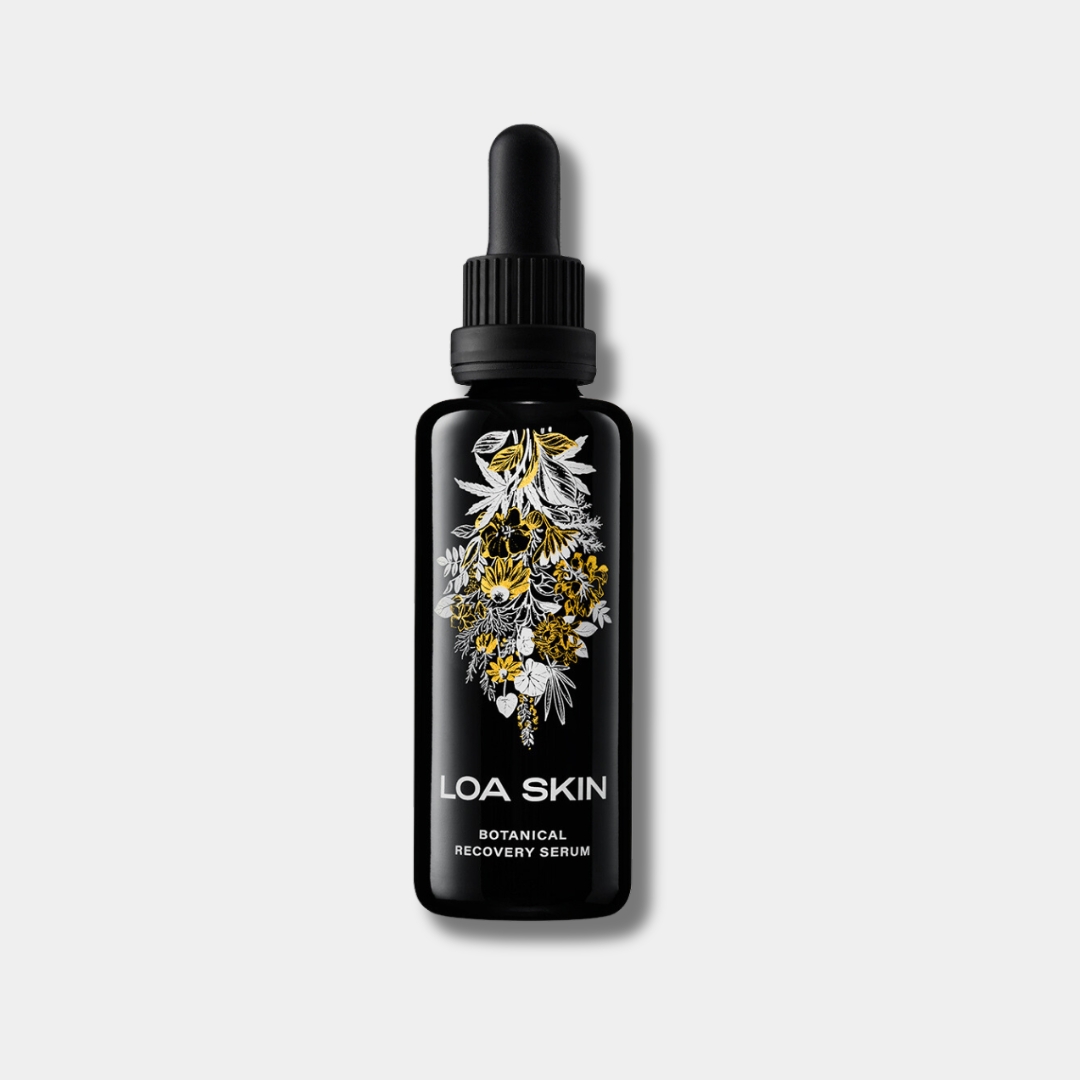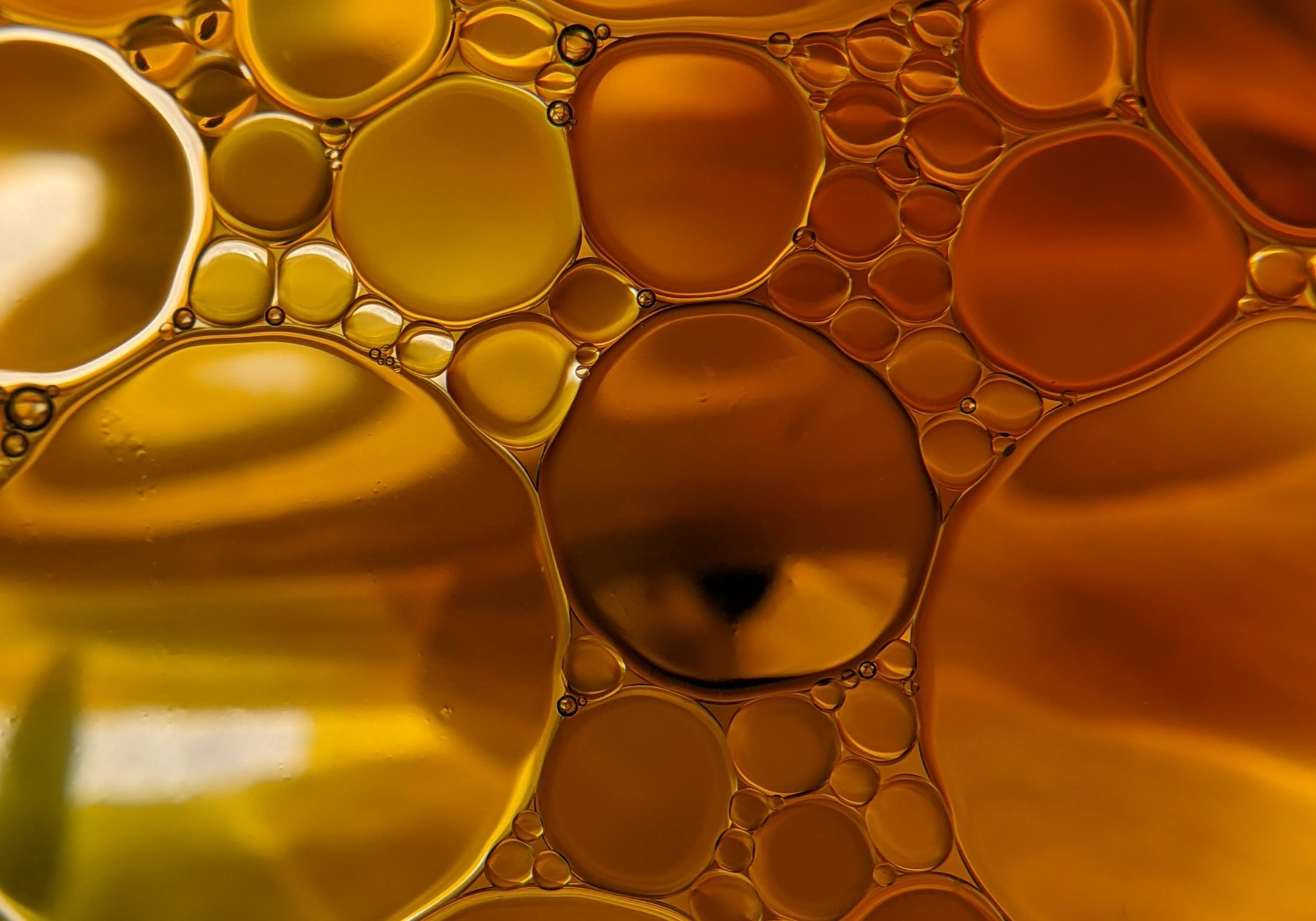Article: How to Treat Acne With Oils High in Linoleic Acid

How to Treat Acne With Oils High in Linoleic Acid
Contrary to what skin care experts and dermatologists tell us, acne-prone skin is deficient in linoleic acid.
This deficiency plays a major role in the severity of the condition, and using oils high in linoleic acid can help to reduce acne breakouts.
Why oils high in linoleic acid are vital for treating acne
While it seems counterintuitive to slather oils on acne-prone skin, there's solid evidence to support otherwise.
What is linoleic acid and why is it important for the skin?
Linoleic acid isn't just any basic nutrient — it's one of the most important for human skin.
It's an omega-6 polyunsaturated fatty acid, which we must obtain through external sources as our bodies can't produce it naturally.
Alongside ceramides, cholesterol, and squalene, linoleic acid makes up part of the lipid portion of the epidermis (skin's outer layer), where it plays a critical role in the skin's protective barrier function. It does this by contributing to the "lipid barrier", helping to prevent moisture loss from the skin while also protecting against environmental stressors.
Linoleic acid may also be an important component for the skin's natural exfoliating process.
How a linoleic acid deficiency contributes to acne
Our skin is primarily made up of lipids such as essential fatty acids, ceramides, and cholesterol, which play a crucial role in our skin's barrier function.
The most abundant essential fatty acid in the skin is linoleic acid, and as you'll find out below, its loss is a contributing factor in the acne development process.
Here's how linoleic acid is involved in acne-prone skin:
1. The skin becomes deficient in linoleic acid
It has been shown in studies that those with acne have abnormally low levels of linoleic fatty acid in their skin.
When linoleic acid is lacking in the skin, it overcompensates by producing more oleic acid which enlarges sebum.
Sebum is a critical lubricating substance produced by sebaceous glands, which linoleic acid is a vital component of.
While sebum is important for moisturizing skin, if it increases in size, the skin becomes more prone to breakouts.
2. The skin overproduces oleic acid
Oleic acid is a non-essential, omega-9 fatty acid. Our bodies create it naturally, and when it's overproduced in the skin to make up for the loss of linoleic acid, it has a number of negative effects.
It's irritating and detrimental to the skin's moisture barrier when in excess (so it essentially has the opposite effect of linoleic acid). This may manifest in either overly dry or oily skin.
It also stimulates microbial growth, which leads to inflammation and breakouts.
3. C. acnes overgrowth
C. acnes (cutibacterium acnes, previously known as propionibacterium acnes or P. acnes) is a bacteria that's a part of the normal flora of the skin microbiome.
The overgrowth of C. acnes is directly linked to acne breakouts, and not surprisingly, the overproduction of oleic acid.
Other fatty acids found to be lacking in acne-prone skin
Other crucial polyunsaturated fatty acids such as GLA (gamma-linolenic acid, another form of omega-6) and ALA (alpha-linolenic acid, a form of omega-3) are also related to acne symptoms when lacking in the skin.
Treatment with linoleic acid and other polyunsaturated fats topically should be the fundamental part of an acne-prone skin regimen.
These fatty acid deficiencies can be corrected internally and topically
Topically applying oils rich in linoleic acid and other polyunsaturated fats will help to balance sebum production and oiliness that is often associated with acne, as they will help to limit the overproduction of oleic acid.
GLA, ALA, and linoleic acid help to reduce oily skin and breakouts by inhibiting the enzyme 5a-reductase.
This study showed a 25% reduction in the size of microcomedones over a one month period following topical linoleic acid application.
Dietary supplementation of GLA and omega-3 fatty acids can significantly decrease inflammatory and non-inflammatory acne lesions as well.
How to topically treat a linoleic acid deficiency
Face oils, otherwise known as carrier oils, are the answer to balancing fatty acid levels in acne-prone skin.
Face oils can be used topically on the skin, are either edible or inedible, and come from a variety of sources such as vegetables, fruits, nuts, and seeds. Face oils are mainly made up of fatty acids, with linoleic and oleic usually being the most abundant.
It's very important to only use specific oils on your skin, as most can worsen the severity of acne.
Oils high in linoleic and low in oleic acids are considered "drying" oils, meaning they absorb quickly into the skin, and are extremely beneficial for all skin types - including oily, and of course acne.
Oils high in oleic and low in linoleic acids are your olive and avocado oils. They're heavier than high linoleic oils, and take longer to absorb. They can cause breakouts and lead to dry, oily, or combination skin with extended use.
The best oils high in linoleic acid to treat acne
I've made a list of oils below that contain high amounts of linoleic acid with low amounts of oleic acid, with their corresponding percentages.
You may want to experiment with mixing different oils together to see what works best for your skin, and if you want the added benefits of omega-3s and GLA (omega-6).
For an exhaustive list of oils that are safe for acne, read our other article here.
Oils high in linoleic and low in oleic fatty acids
Some of the oils listed may contain GLA, ALA, and SDA (stearidonic acid, a rare form of omega-3).
1. Evening Primrose Oil
Linoleic acid: 72.6%
Oleic acid: 8.4%
GLA: 9.1%
2. Hemp Seed Oil (learn more about hemp oil skin benefits here)
Linoleic acid: 51.9%
Oleic acid: 9.8%
ALA: 10%
GLA: 2% — 4%
SDA: 1% — 2%
3. Safflower Oil (high linoleic variety)
Linoleic acid: 68% — 85%
Oleic acid: 8% — 30%
4. Grapeseed Oil
Linoleic acid: 70.6%
Oleic acid: 16.2%
5. Pumpkin Seed Oil
Linoleic acid: 57.2%
Oleic acid: 23.3%
6. Black cumin seed oil
Linoleic acid: 55.6%
Oleic acid: 22.6%
7. Rosehip seed oil
Linoleic acid: 44.1%
Oleic acid: 13.9%
ALA: 33.9%
8. Borage seed oil
Linoleic acid: 38.8%
Oleic acid: 17.9%
GLA: 20.1%
9. Soybean oil
Linoleic acid: 52.9%
Oleic acid: 22.7%
ALA: 6.9%
Oils slightly higher in linoleic than oleic acid
1. Kuikui Nut Oil
Linoleic acid: 39.8%
Oleic acid: 25.4%
ALA: 25.6%
2. Sesame Oil
Linoleic acid: 45.6%
Oleic acid: 39.2%
*The percentages for each of these oils will vary due to different growing conditions.
Optional: tea tree essential oil
Tea tree essential oil is a strong antibacterial against C. acnes. It should not exceed 0.3% concentration in a formula, as it can irritate the skin.
Buying Organic
It's important to buy certified organic oils that have been cold-pressed (extracted using low heat) from reliable sources.
Non-organic oils are usually refined, contain pesticides and have a completely different fatty acid and nutrient profile than organic varieties. In fact, some non-organic oils on the market have even been found to contain harmful chemicals.
Mountain Rose Herbs is an excellent source of organic and sustainable ingredients. All of the percentages of fatty acids above are provided by Mountain Rose Herbs and are unique to their own products.
Treating acne with oils FAQ
Are omega-3 fatty acids good for acne?
Omega-3 fatty acids are essential for the body and skin. They help to regulate inflammation, and have been shown to be lacking in acne-prone skin.
EPA and DHA, two forms of omega-3, can significantly reduce acne lesions.
Can omega-6 fatty acids cause acne?
When taken in excess internally, omega-6 fatty acids may lead to an inflammatory response in the body, but this does not cause acne.
Linoleic acid (form of omega-6) is an integral part of the epidermis (outer layer of skin), which helps to keep the skin hydrated. It's crucial for treating and preventing acne, as people with acne have low levels of it in their skin.
When the skin is lacking linoleic acid, it overproduces oleic acid, an omega-9 fatty acid that causes breakouts and leads to overly dry or oily skin.
Which oils are best for acne?
Oils that are high in omega-3 and 6 essential fatty acids such as evening primrose and hemp, are some of the best options for treating acne.
Certain oils that have a high content of omega-9 should be avoided, as these will worsen acne. Some of these include olive oil, avocado oil, and argan oil. Learn more about these types of oils here".
Is oleic acid good for acne?
Oleic acid is directly involved in acne breakouts. It's an omega-9 non-essential fatty acid, that is produced in excess when other important nutrients are lacking in the skin.
Acne-prone skin is unusually high in oleic acid, leading to inflammation and enlarged sebum. Oleic acid has been shown to help the infamous C. acnes bacteria thrive on the skin.











1 comment
Cant wait to order my first ever bottle! A friend I work with had told me about you guys and she was super stoked about LOA oil. ♡
Amanda Strutt
Leave a comment
This site is protected by reCAPTCHA and the Google Privacy Policy and Terms of Service apply.